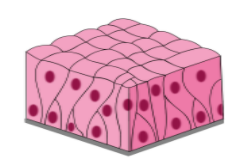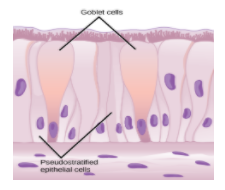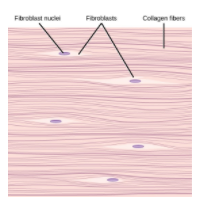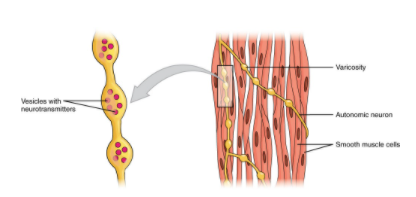
The four sketches (A, B, C, D) represent four different types of animal tissue. Which one of these is correctly identified in the options given, along with its correct function and location?
A.

B.

C.

D.

A. Tissue: [C] Collagen fiber; location: Cartilage; Function: attach skeletal muscles to bones
B. Tissue: [D] Smooth muscle tissue; location: heart; function: heart contraction
C. Tissue: [A] Columnar epithelium; location: nephron; function: secretion and absorption
D. Tissue: [B] Glandular epithelium; location: intestine; function: secretion




Answer
553.8k+ views
Hint: The correct option can be identified easily by just assessing the right location along with the function associated with that location or organ. Normally the figures of the muscle are given correctly and the difference is between the functionality and location.
Complete answer:
For this question we require a thorough knowledge of the tissues and how they enhance the functioning of any organ where they are present. Like if we see, the absorption of whatever food we eat is done in the intestine. The intestine already has villi on its inner surface to increase the rate of absorption so the epithelial tissue which will be present there also helps in increasing the absorption rate.
Now let us take each option one by one and discuss. The first option is talking about figure C, it looks like a mesh of thin filaments thus the figure is correct and talking about the location and function they are present in the skeletal muscles and help them in attaching to bones. Thus, this is a correct answer. The next option is of figure D, the figure is correct but the location and functionality is different. The muscles in the heart are cardiac muscles and they only help in contraction of the heart. Smooth muscle is not a part of the heart.
The other two options are of figure A and B, the identification of the figure is correct but the location is wrong along with the function. The tissues present in the nephron and intestine are the same and they both help in increasing the absorption rate at both the places.
Hence, the correct answer is option (A).
Note: The epithelial tissue present in the nephron and intestine is the simple epithelial tissue, the difference is just that in the intestine it is ciliated to increase the absorption rate. But in the nephron this epithelial tissue is in the form of cuboidal epithelium.
Complete answer:
For this question we require a thorough knowledge of the tissues and how they enhance the functioning of any organ where they are present. Like if we see, the absorption of whatever food we eat is done in the intestine. The intestine already has villi on its inner surface to increase the rate of absorption so the epithelial tissue which will be present there also helps in increasing the absorption rate.
Now let us take each option one by one and discuss. The first option is talking about figure C, it looks like a mesh of thin filaments thus the figure is correct and talking about the location and function they are present in the skeletal muscles and help them in attaching to bones. Thus, this is a correct answer. The next option is of figure D, the figure is correct but the location and functionality is different. The muscles in the heart are cardiac muscles and they only help in contraction of the heart. Smooth muscle is not a part of the heart.
The other two options are of figure A and B, the identification of the figure is correct but the location is wrong along with the function. The tissues present in the nephron and intestine are the same and they both help in increasing the absorption rate at both the places.
Hence, the correct answer is option (A).
Note: The epithelial tissue present in the nephron and intestine is the simple epithelial tissue, the difference is just that in the intestine it is ciliated to increase the absorption rate. But in the nephron this epithelial tissue is in the form of cuboidal epithelium.
Recently Updated Pages
Phenol on oxidation in air gives A Quinone B Catechol class 11 chemistry CBSE

What were the causes of the Ethnic conflict in Bel class 11 social science CBSE

A system of two identical rods Lshaped of mass m and class 11 physics CBSE

What are i positive catalysts and ii negative catalysts class 11 chemistry CBSE

Breaking stress of a material is 2times 108Nm2 What class 11 physics CBSE

A carpenter has constructed a toy as shown in the figure class 11 physics CBSE

Trending doubts
What is meant by exothermic and endothermic reactions class 11 chemistry CBSE

10 examples of friction in our daily life

One Metric ton is equal to kg A 10000 B 1000 C 100 class 11 physics CBSE

1 Quintal is equal to a 110 kg b 10 kg c 100kg d 1000 class 11 physics CBSE

Difference Between Prokaryotic Cells and Eukaryotic Cells

What are Quantum numbers Explain the quantum number class 11 chemistry CBSE




